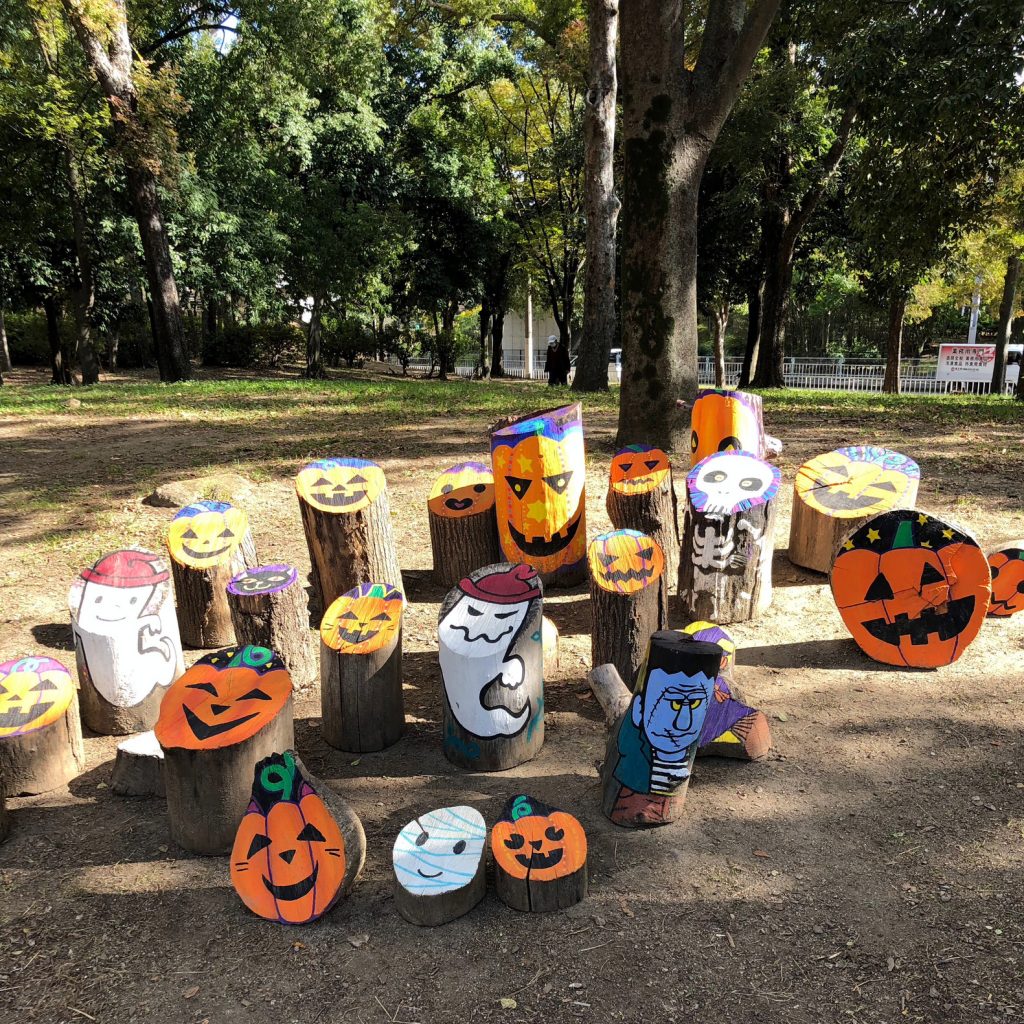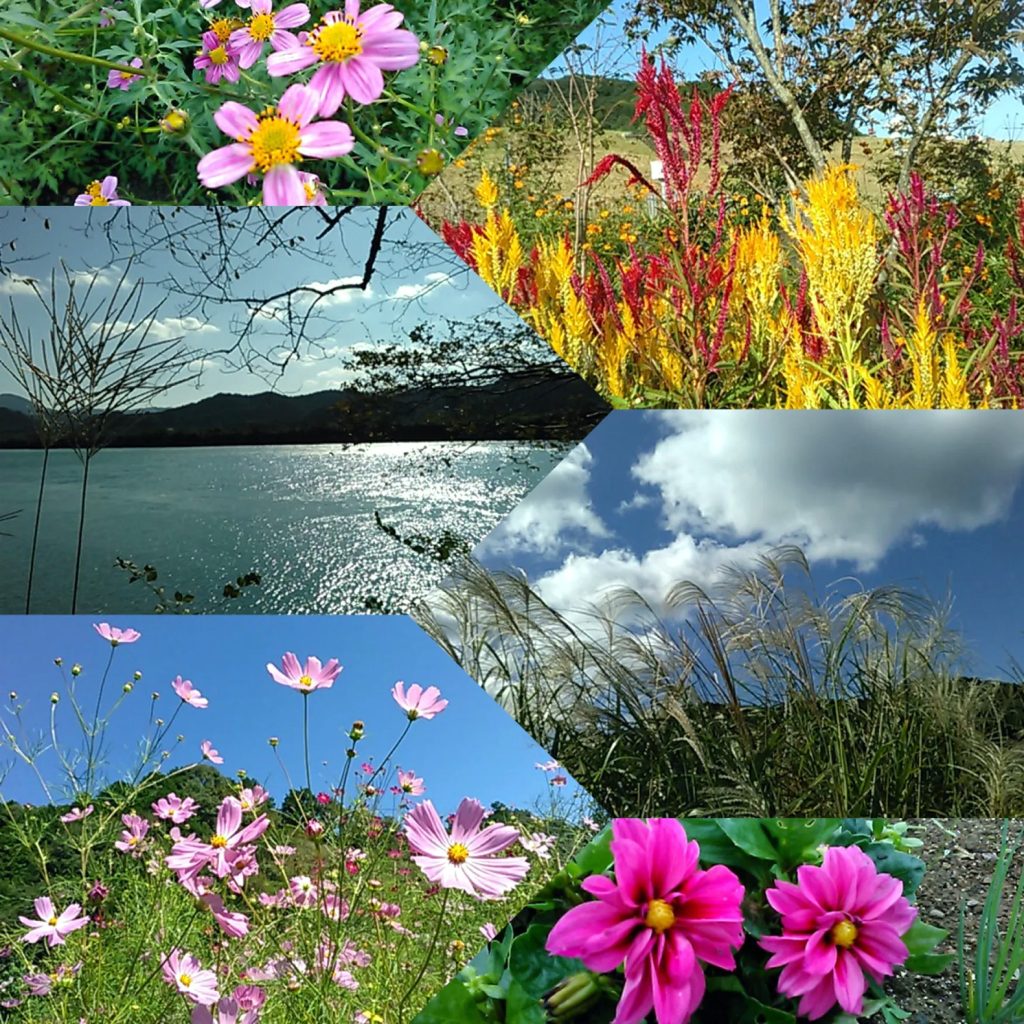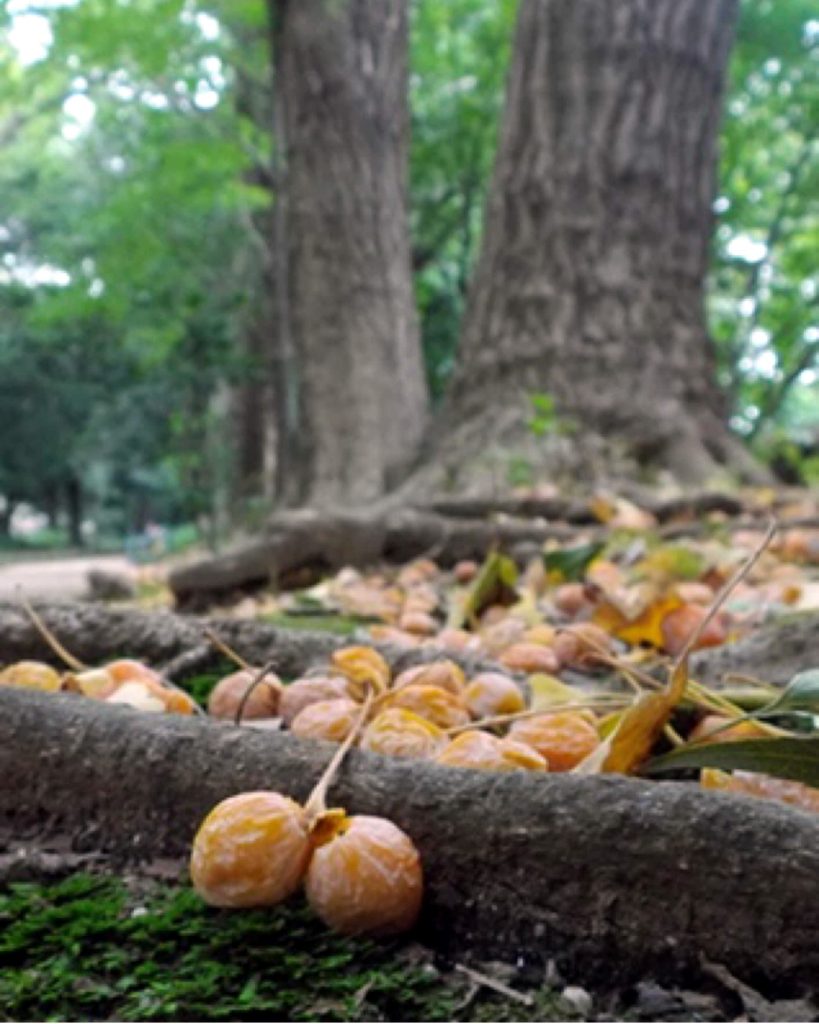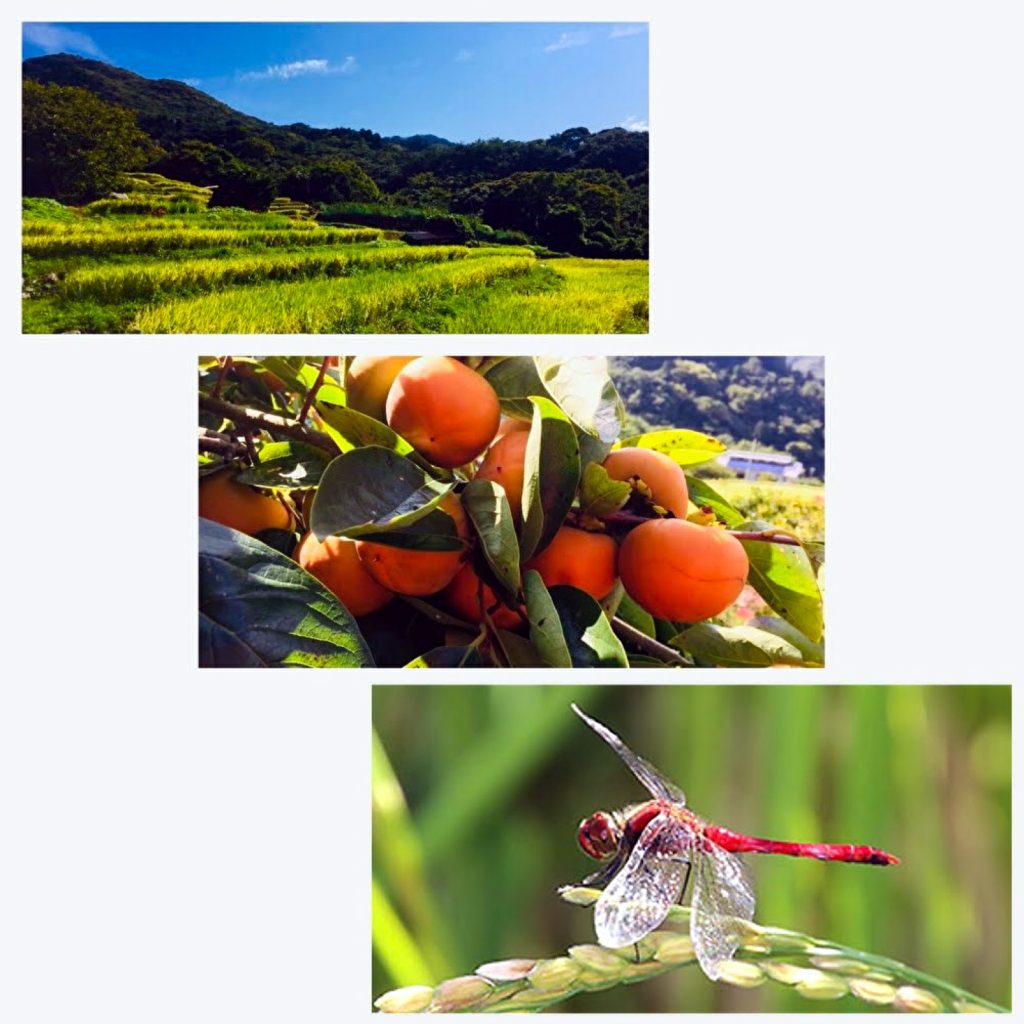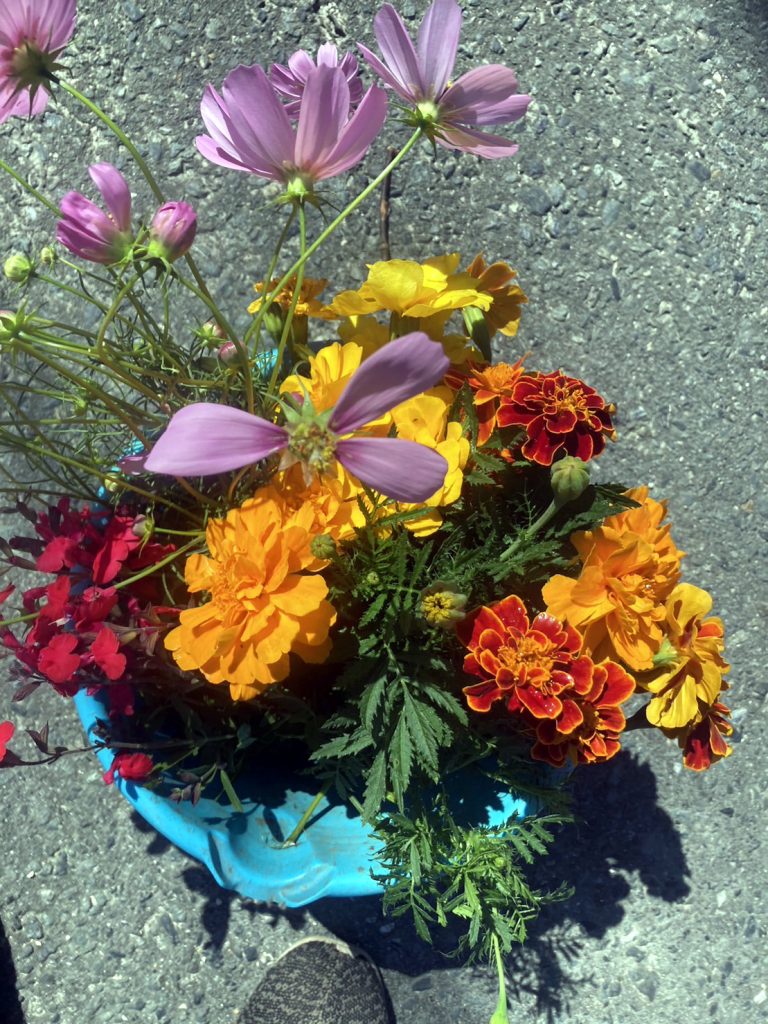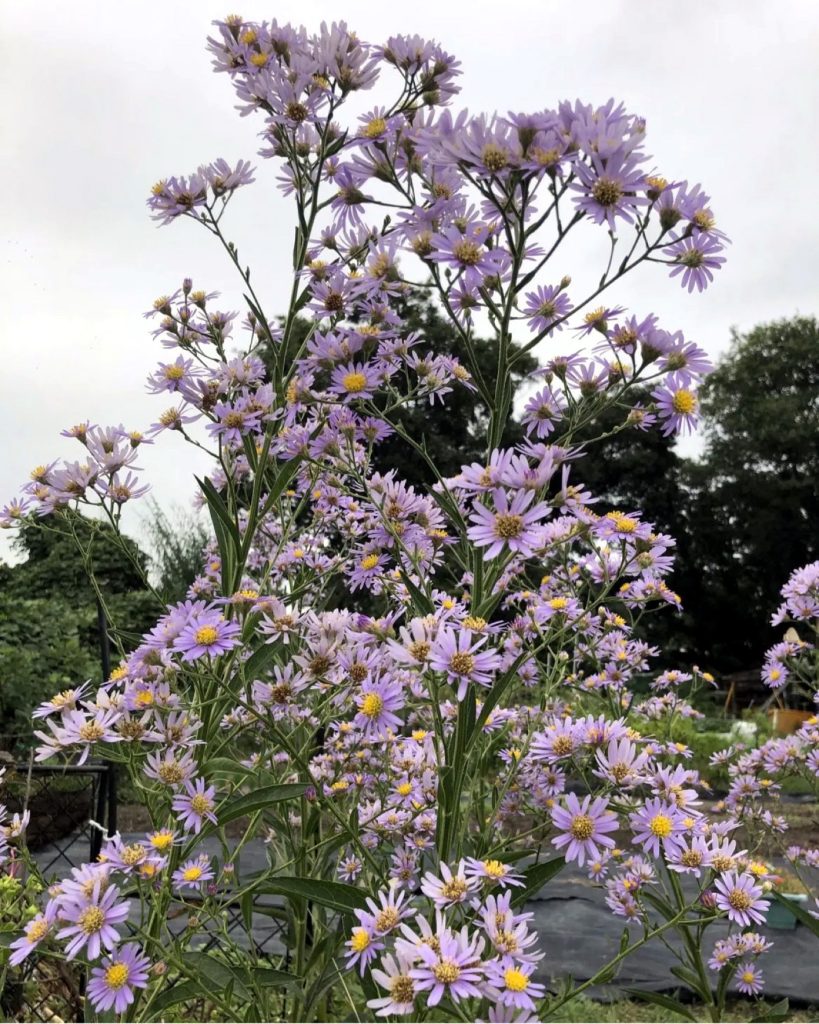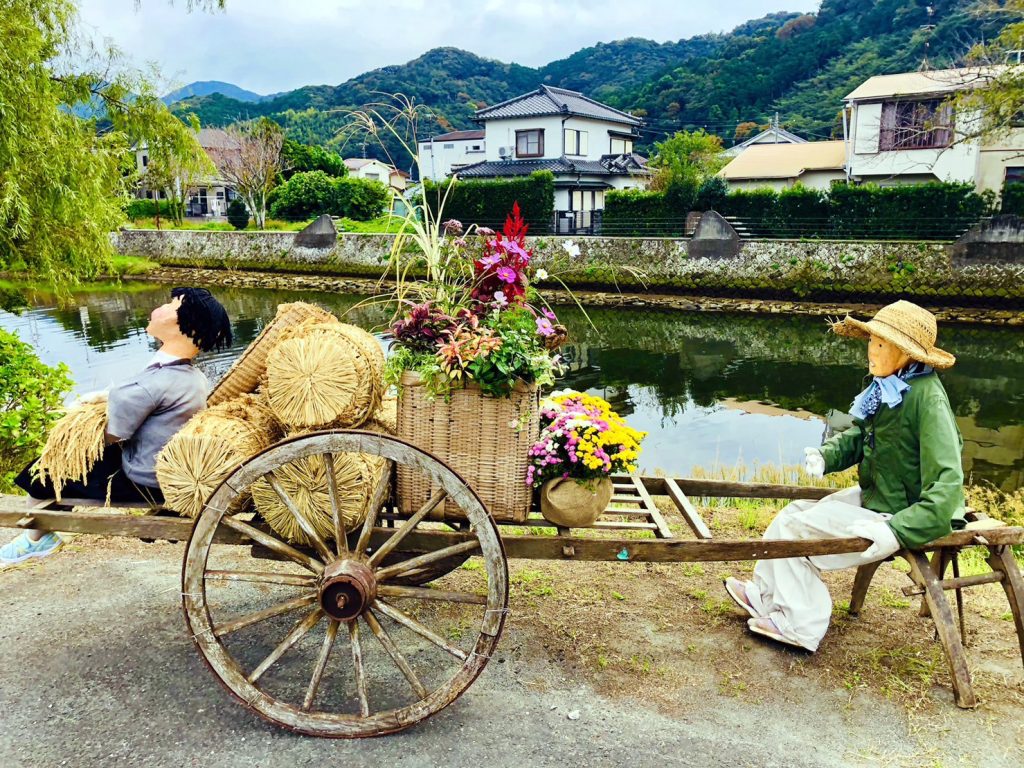
Autumn is the season of harvest, and among them, rice is the most essential harvest for the Japanese. The cultivation of rice, estimated to have begun around 10,000 years ago in the Yangtze River region of China, was transmitted to Japan through the Chinese mainland or the Korean Peninsula, but the exact timing of this transmission remains unclear. Rice cultivation mainly involves field cultivation and paddy cultivation, but the commonly practiced paddy rice cultivation in present-day Japan is believed to have been first introduced in northern Kyushu around 3,000 years ago (10th century BC). Paddy rice cultivation spread to the Kinki region approximately 300 years later (7th century BC) and reached the northern tip of Honshu about 600 years after that (4th century BC). Since then, it has been an integral part of the lives of the Japanese, continuing to this day.
The couple, having completed the rice harvest, loads rice bags onto a large cart and carries a basket of flowers they cultivated by the side of the field on their way back home. Across the river, you can see modern houses, but it’s unclear if they are aware of such a scene or not as they leisurely take a break.
秋は収穫の季節。中でもお米は日本人にとって最重要な収穫物です。約1万前に中国の長江流域で始まったと推定される稲作は、中国大陸から、もしくは朝鮮半島を経由して日本に伝わりましたが、それがいつ頃なのかははっきり分かりません。稲作には主に畑での栽培と、水田での栽培がありますが、現在の日本でも一般的な水田稲作は、約3,000年前(紀元前10世紀)に九州北部に最初に伝わったと考えられています。水田稲作は、それから約300年後(紀元前7世紀)には近畿地方まで広がり、約600年後(紀元前4世紀)には本州の北端まで伝わりました。爾来今日に至るまで日本人の命を繋いできたわけです。
お米の収穫を終えたご夫婦が大八車に米俵を積み、田んぼの傍で育てた花々を籠に入れて家に帰る途中でしょう、川向こうには今風の家が建っていますが、そんな光景を知っているのか、いないのか、のんびりと一休みしています。


